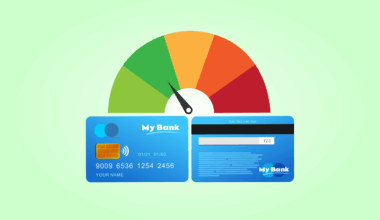Dividend Investing Strategies for a Steady Retirement Income
When planning for retirement, one key element to consider is dividend investing. This strategy involves purchasing stocks of companies that return a portion of their profits to shareholders in the form of dividends. Such investments can provide a consistent income stream, which is crucial for retirees looking to maintain their lifestyle. However, not all dividend stocks are created equal, and careful selection is vital. Investors should assess factors like the company’s dividend payout history, growth potential, and overall financial health. Many retirees build a diversified portfolio of dividend stocks to reduce risk while ensuring a steady income flow. This approach allows for capital appreciation while generating cash. It’s often advisable to reinvest dividends to benefit from compounding, particularly in the early stages of investment. As retirement approaches, consider shifting focus to more conservative dividend-paying stocks that prioritize stability over aggressive growth. This ensures income generation during retirement while preserving invested capital. For more insights, consider consulting financial experts and using reliable platforms for tracking dividend stocks, which help in making informed investment decisions. Remember, a well-planned strategy is key to successful dividend investing.
Another vital aspect of dividend investing is understanding the types of dividends available. Regular cash dividends are the most common, paid quarterly or annually. In contrast, some firms offer stock dividends, which can be reinvested to boost your holdings. This option might appeal to younger investors who can defer their income for prolonged growth. A diversified portfolio can help mitigate risk and ensure that a portfolio has sufficient exposure to different sectors. Look for companies with a history of increasing their dividends consistently over time, as this indicates stability and strong management. It’s also wise to focus on companies with a low payout ratio, which reflects their ability to sustain dividends in varying market conditions. Research indicates that dividend-growing stocks often outperform non-dividend-bearing stocks over the long term. Furthermore, incorporating exchange-traded funds (ETFs) that focus on high dividend-yielding stocks can enhance diversification and reduce risk. As the market fluctuates, these ETFs can provide stable income and long-term growth potential. Regular review of your investments is necessary to ensure that performance aligns with financial goals. Consider your retirement timeline and be proactive about adjustments.
Risks and Mitigations in Dividend Investing
While dividend investing presents many benefits, it is not without its risks. Market volatility can affect share prices significantly, influencing the income derived from dividends. Furthermore, economic downturns can lead to reduced earnings, resulting in lowered or eliminated dividends by companies aiming to conserve cash. Therefore, it is crucial to perform thorough research and maintain a well-balanced portfolio to reduce exposure. One effective strategy involves diversifying holdings across different sectors and industries. Doing so can help ensure that a downturn in one sector does not drastically impact overall income. Additionally, consider investing in dividend aristocrats, which are companies recognized for consistently raising dividends over extended periods. These firms usually exhibit resilience during market dips, making them a safer choice for retirement income. Another method is reinvesting dividends rather than taking them as cash, which can offset market fluctuations over the long haul. Keeping an eye on macroeconomic indicators and company fundamentals will also provide essential context to inform decisions. As market conditions change, having a plan for rebalancing your portfolio can enhance long-term success. Seek advice from financial professionals when in doubt.
Another significant consideration is the tax implications related to dividend income. Understanding how dividends are taxed can directly impact your returns. In many jurisdictions, qualified dividends are taxed at a lower rate than ordinary income. This distinction is crucial for retirement planners to consider when managing their investments. Furthermore, if you are in a lower tax bracket during retirement, you might benefit from reduced tax rates on dividends. Discussing your tax strategy with a financial professional can uncover opportunities to maximize net income from dividends. Incorporating tax-efficient strategies, such as utilizing tax-advantaged accounts like Roth IRAs for dividend investments, can enhance long-term growth. These accounts allow your investments to grow tax-free, making them ideal for holding dividend stocks. It’s advisable to be aware of the tax consequences of each dividend payment, particularly how they fit into your overall retirement tax strategy. Each individual’s situation is unique, therefore personalizing your approach based on income needs, tax circumstances, and long-term goals is essential. Regularly revisiting your strategy and consulting with a tax advisor can optimize your investment’s effectiveness.
The Role of Research and Analytics
Effective dividend investing relies heavily on diligent research and analysis. Investors should utilize financial metrics such as the dividend yield, payout ratio, and historical payment consistency. Understanding these metrics helps assess a company’s capacity to continue paying or even increasing dividends. Resources like financial news websites and dedicated investment platforms provide invaluable data to support many analytical efforts. Use tools to create filters that help identify potential dividend growth stocks. Keep in mind that not just high yields are attractive; it’s equally important to evaluate the potential for dividends to grow in the future. Setting up alerts for dividend announcements can also help maintain awareness of changes in your portfolio. Networking with other investors or joining investment clubs can provide additional insights and discover new opportunities. Consider reading annual reports and earnings calls for insights into a company’s financial health and strategy regarding dividends. Over time, becoming adept at analysis will improve confidence in making investment decisions, benefiting your retirement portfolio. Moreover, regularly updating your knowledge through blogs or webinars can keep you current on market trends.
Effective dividend investing also emphasizes the importance of regular monitoring. Post-investment assessments will help track performance and adjust your strategy accordingly, permitting an agile response to market changes. Each quarter, review the dividend payments, company fundamental changes, and overall economic conditions. Staying informed empowers you to make timely decisions regarding whether to hold, sell, or expand your dividend investments. Market conditions vary: different environments require distinct strategies. For instance, during periods of economic growth, higher-risk stocks with quick dividend growth may be appealing. Conversely, in a recession, stability might take precedence. Creating a dividend calendar can aid in tracking each company’s pay dates and performance occurrences, ensuring no opportunities slip through the cracks. Utilizing digital tools or spreadsheets to record dividend payments and reinvestment can also enhance oversight. It is crucial to stay away from emotional investing; focus on the data and long-term objectives. Constant assessment allows adaptability while reducing the likelihood of bad choices based on short-term market emotions. Embrace the lessons learned from both profitable and unprofitable investments. Continuous learning is key to improving dividend investing skills.
Conclusion: Building Your Dividend Investment Plan
To summarize, dividend investing can create a significant and steady income source during retirement. By carefully selecting a diverse array of dividend-paying stocks, emphasizing quality, and maintaining a disciplined approach, retirees can develop a resilient income stream. Assessing factors like payout history, growth potential, and overall stability helps in selecting robust dividend stocks. Furthermore, being aware of the risks, tax implications, and market conditions is essential for informed decision-making. Engage in ongoing research and monitoring to optimize your portfolio continually and adapt to shifts in the financial landscape. Consider consulting with financial experts as needed to ensure that your approach aligns with long-term objectives. Construction of a sound investment strategy takes time, patience and assessment of personal circumstances. As you draw closer to retirement, it may be beneficial to transition towards less volatile investments focusing on dividend reliability. Ultimately, remember that the primary goal of dividend investing in retirement is to generate predictable income while preserving capital in an ever-volatile market. With commitment and informed strategies, achieving a steady and sustainable income stream from your investments can become a reality.
Investing time in understanding the market and its dynamics will yield numerous rewards for your future.


